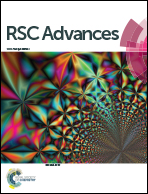Typical antibiotics in the receiving rivers of direct-discharge sources of sewage across Shanghai: occurrence and source analysis†
Abstract
In Shanghai, the antibiotics in the receiving rivers of direct-discharge sources of sewage (aquaculture farms, cattle farms and wastewater treatment plants) were investigated. Water and sediment samples from the receiving rivers of these sources were collected, and were screened for 19 typical antibiotics. The concentration of the antibiotics in the water and sediment ranged from not detected (ND) to 530.05 ng L−1 and ND to 1039.53 ng g−1, respectively, and sulfonamides and fluoroquinolones were identified as the main antibiotics in the water and sediment, respectively. According to principal component analysis with multiple linear regression (PCA-MLR), source contributions were estimated: wastewater treatment plants (66.8%) > aquaculture farms and cattle farms (21.2%), indicating that the contribution of human antibiotics was higher than veterinary antibiotics. Based on the risk quotients, ciprofloxacin was identified as the main antibiotic that causes medium risk in the aquatic ecosystem. This work systematically reflected the profile and source apportionment of antibiotics in Shanghai, which is helpful for antibiotic contamination control and environmental management.



 Please wait while we load your content...
Please wait while we load your content...